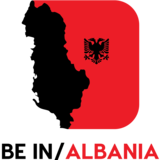Languages Spoken In Albania

Languages spoken in Albania are:
Albanian (official)
Bosnian
Turkish
Roman
English – widely spoken especially by youth
Italian
With approximately more than 90% of the population of Albanians being ethnic Albanians, the Albanian language is recognized as an official language. Other languages including Turkish, Romani, Serbian, Macedonia and Bosnian are also spoken.
English is widely spoken, especially by youth. English is also taught at schools starting from primary education.
Albanian is an Indo-European language that is spoken by numerous inhabitants of the Albanian culture especially those bordering the Albanian and Kosovo countries. The language is divided into two main dialects used depending on the geographical area of the inhabitants. The first dialect, Tosk, which derives from southern Albania, is mostly used in Albania, Italy, Greece, and Turkey, whereas Gheg, the second, is spoken by the majority of the Kosovar people and in places such as Macedonia and Montenegro and northern Albania.
The language is very distinct to most Indo-European languages and it remains independent of its sub-group. The closest relation towards the language can be the ancient Illyrian language.
The Albanian alphabet is:
A B C Ç D DH E Ë F G GJ H I J K L LL M N NJ O P Q R RR S SH T TH U V X XH Y Z ZH
In lowercase, it is:
a b c ç d dh e ë f g gj h i j k l ll m n nj o p q r rr s sh t th u v x xh y z zh
